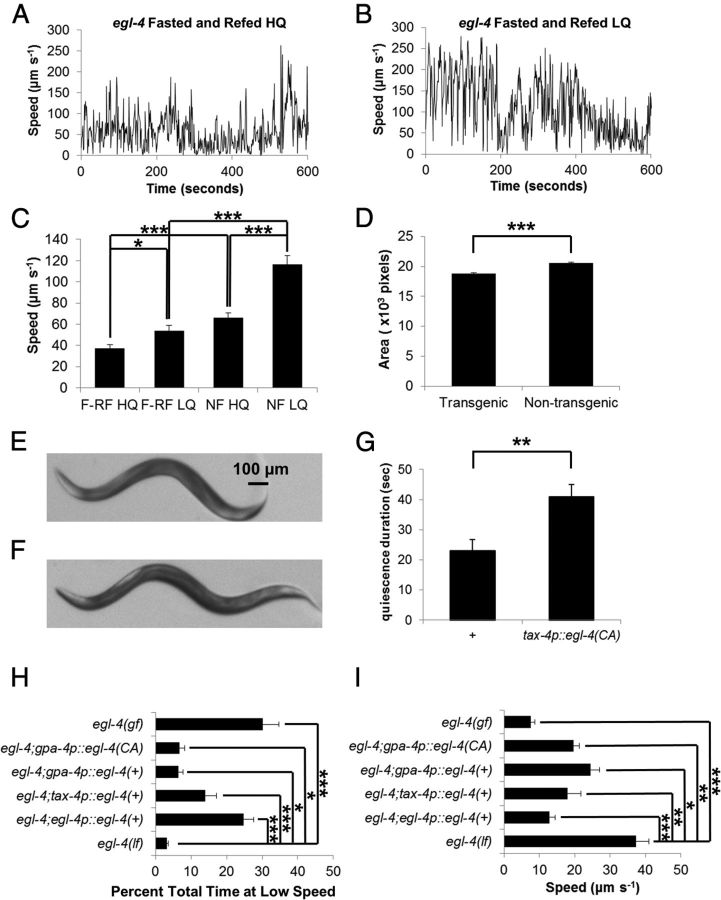Figure 6.
EGL-4 function for quiescence A, A representative speed plot of a fasted and refed egl-4 mutant worm on high quality food. B, A representative speed plot of a fasted and refed egl-4 mutant worm on low quality food. C, The mean speeds of egl-4 mutants under different conditions: F-RF HQ: fasted and refed high quality food, NF HQ: nonfasted and fed high quality food. F-RF LQ: fasted and refed low quality food. Fasted and refed high quality food of egl-4(lf) was duplicated from Figure 1. At least 10 worms were tested for each group. *p < 0.05, **p < 0.01, ***p < 0.001, Kruskal-Wallis ANOVA (p < 0.001) followed by Mann–Whitney U test. D–F, Worms expressing EGL-4CA in TAX-4 neurons have smaller body size than their nontransgenic siblings, phenocopying egl-4(gf) worms. Quantification of body size (D) and representative pictures of a transgenic sibling (E) and a nontransgenic sibling (F). At least 30 worms were measured over two independent experiments. *p < 0.001, by Student's t test. G, Satiety quiescence duration is increased in worms expressing EGL-4CA in TAX-4 neurons (tax-4p::egl-4(CA)) compared with nontransgenic siblings after 12 h fasting and 3 h refeeding. n = 10 for each group per experiment, repeated three times. **p < 0.01 by Student's t test. H, I, Wild-type copy of egl-4 expressed under its own promoter or a tax-4 promoter rescued the egl-4 defect in satiety quiescence with respect both to total time spent at low speed (<1 μm s−1, H) and to mean speed (I). However, wild-type egl-4 or egl-4CA expressed only in ASI neurons was not sufficient to fully rescue the egl-4 defect, especially in total time spent at low speed (H), suggesting a partial rescue. *p < 0.05, **p < 0.01, ***p < 0.001, Kruskal-Wallis ANOVA (p < 0.001) followed by Mann–Whitney U test. egl-4(lf) was duplicated from C and Figure 1.

